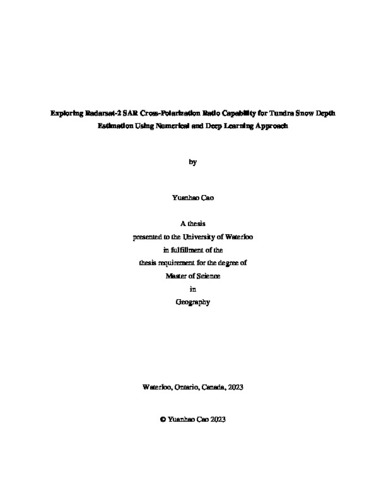| dc.description.abstract | Snow is essential to the Earth system, significantly influencing the global climate, freshwater availability, and economic activities. A significant snow cover decline has been reported in vast northern hemisphere areas. The decrease in snow cover will affect more than one-sixth of the world's population who rely on the snow as a freshwater supplement. Snow mass, often expressed as snow water equivalent (SWE), signifies the quantity of water held in the form of snow on the Earth's surface, and it plays a crucial role in the functioning of water, energy, and geochemical processes. Since the seasonal snow has a high spatial variability at regional and local scales, surface observations cannot provide sufficient SWE information. The quality of global SWE estimates needs to be improved. In recent years, C-band spaceborne SAR has shown a high potential for global monitoring of SWE. This thesis aims to explore the current spaceborne C-band SAR signal sensitivity to Arctic tundra snow and define a suitable approach for estimating deep snow depth through the tundra environment. The noticeable variation of C-band backscatter with the snow depth generally demonstrated the C-band sensitivity to dry snow for the deep snow. These areas are dominated by tall vegetation areas such as tall shrubs and riparian shrubs. The cross-polarization ratio method also shows a higher correlation with snow depth than cross-pol and co-pol backscatter, which is generally consistent with earlier research. Also, numerical, and deep learning (DL) approaches were tested based against drone-based snow depth reference data. The result shows that the numerical approach may only be valid in a place with over 2.5 m snowpack. Compared to the numerical approach, the DL approach shows a better evaluation, resulting in a correlation coefficient of R 0.79 between the estimated and target snow depth with a root mean square error (RMSE) of 19 cm. The DL approach can be more suitable for estimating snow depth from C-band SAR observation under the Arctic tundra snow environment. | en |

